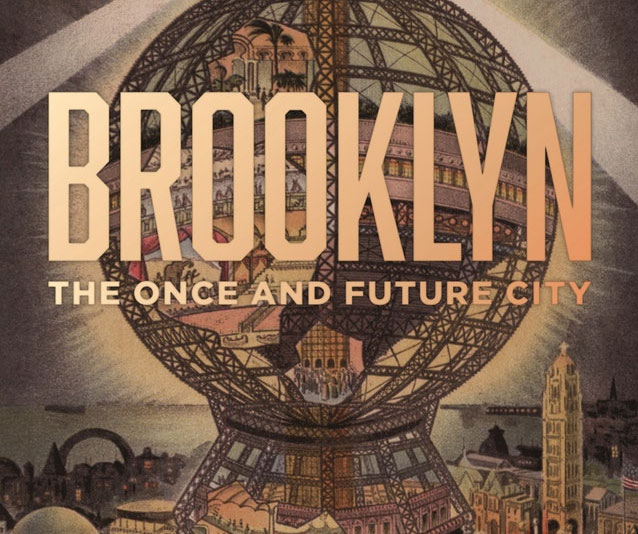With “Brooklyn: The Once and Future City,” author and Brooklyn native Thomas Campanella has written the unqualified best and most thorough history of our city-turned-borough. He will talk about it at the Brooklyn Historical Society on November 7.
The book takes the reader in exquisite detail from the 17th century to today’s popular Brooklyn Point. It grabs you from its cover of a fantastical globe tower designed by Samuel Friede as the “world’s tallest building” to hidden moments from Brooklyn’s storied past.
Campanella’s decade-long research has unearthed many original facts from Brooklyn’s lore as the “storied underdog.” A professor of urban studies and city planning at Cornell University, the author utilizes creative chapter titles and selected quotations — some imaginatively interpreted — to introduce pages crowded with detail. Chapters, arranged thematically, jump through time and are peppered with illustrations: historic photos, sketches, design drawings, period ads. The coverage is balanced and readable although the type is dense.
From a geological introduction showing how Brooklyn’s terrain took shape, Campanella reconstructs the dreams that created the mythological city with its heroes and villains. He exposes the historical contradictions and anomalies about the Battle of Brooklyn, the promise of the world’s largest shipping port on Long Island, the evils of the Brooklyn Navy Yard, the secrets behind the Brooklyn-Queens Expressway and the never-built Cross Brooklyn Expressway. From the Dutch to the English to the Americans, Brooklyn persisted, sometimes gloriously, sometimes not.
Chapter titles tease the reader to explore. “Whip, Spur and Saddle” details the glory days of horse racing and grand hotels which led to the paradox of the stench created from “The Isle of Offal and Bones” on Barren Island. “The Steampunk Orb” discloses the fraud Samuel Friede perpetrated selling stock for his proposed 700-foot high Coney Island globe. Floyd Bennett Field is the center of “Grand Central of the Air” while “Field of Schemes” uncovers the elaborate Brooklyn Civic Center gossamer plans that government and private forces tried to create.
Toward the end of the book, “Colossus of Roads” traces Robert Moses and his path of destruction through Brooklyn. “Book of Exodus” describes the “white flight” and black protests of the post-war years, and the subsequent escape to the “trolleyburbs” of Levittown causing the 1960s to be the “most convulsive in Brooklyn history.” He points out that the federal GI Bill allowed former service personnel to buy free-standing homes, not rent them, as long as the buyer was “a member of the Caucasian race.”
The pages of Campanella’s book are crowded with detail. He cites the Brooklyn enmity reserved for Walter O’Malley, the Dodgers owner who oversaw their transfer out of Brooklyn, Moses who created the term “parkway,” and Fred Trump, “the Henry Ford of housing.” The current president’s father had demolished Steeplechase in 1966 shortly after Penn Station was torn down. Of the BQE, the author notes that it “crushed life out of everything in its path.” Pete Hamill is quoted on his opinion of the Brooklyn Eagle: “never a great paper but it had a great function … to weld together a community.” [Ed.: With respect, we contend it was a great paper, and now a great news outlet.]
Other highlights focus on the southern shore and its environs where Lady Moody founded Gravesend and John McKane gave birth to Coney Island. The dream of Prospect Park, he shares, was inspired by the grand boulevards of Europe. The creation of Brooklyn’s brownstones; the aftereffect of the war; labor problems spurring the demise of beer, tugboats and the original Eagle; building Brooklyn Bridge Plaza — all retold substantially and insightfully by Campanella.
A note about design: creative and outstanding. The stark sans serif lettering on the cover against muted colors of the Friede Tower is captivating.
“Brooklyn: The Once and Future City” by Thomas J. Campanella; Princeton University Press.
The Brooklyn Historical Society event, “Built and Never-Built Brooklyn: An Exploration,” with Professor Campanella starts at 6:30 p.m. at 128 Pierrepont St.
John B. Manbeck is the former Brooklyn Borough Historian.




A great article to read!!